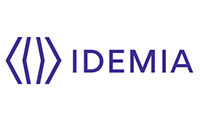Program
Introduction
Opening Remarks
9:30am
APSCA - NGC2022 - Outlook for Payments and Identity
As the pandemic winds down after nearly 3 years, the payments and identity businesses have changed. A significant increase in customer adoption of both online and face-to-face electronic payments has accelerated the transition to digital payments. The growth of online and off-line electronic payments is driving demand for more effective digital identity solutions to protect consumers, merchants and all payments stakeholders. What will these changes mean for banks, fintechs and other issuers; merchants and customers; and the payment card business?
Greg Pote, Chairman, APSCA
10:00am
Expo, Refreshments, Networking
Session 1
Evolution of Payment Cards
10:45am
Payment innovations in an era of payment disruptions
Global payment card spending exceeded $42 trillion in 2021. Payment card spending was up over 20% in all global regions , and Asia-Pacific saw the greatest absolute growth . In this session keynote presentations explore how the payment card business is changing; regional payment market developments; emergence of next-generation card solutions; factors driving card issuance, acceptance and usage; and the reasons behind the growth of payment card issuance and usage despite continuing development of alternative forms of payments.
Viewpoint 1: William Cheong, Digital Payments Consultant, APAC Asia Pacific, Entrust [~20min]
Viewpoint 2: Joshua Chong, Lead Consultant, Kapronasia [~20min]
Discussion
What’s Next for Payment Cards
Globally, the number of payment cards in circulation at end 2021 was 25.2 billion and this is expected to rise to 30.6 billion by 2025. By 2025, the Nilson Report estimates that consumers using global branded cards issued in APAC will generate 288.01 billion purchase transactions (double the U.S. market) accounting for 44.86% of the world’s total purchases. What is driving this trend?
- Industry pundits have long predicted that we would reach “peak card” and card payments would be replaced by instant payments, open payments, account-to-account payments. Why has this not happened…. yet?
- Mobile payments continue to grow but, in most markets, they are an alternative (more convenient) way to make a card payment. So, the future is actually going to be “mobile and cards” rather than “mobile or cards”?
- Are digital cards (once considered a threat to physical cards) now becoming an indispensable part of a complete payment card product? Will they in future be issued jointly with (or ahead of) the physical card?
- The ongoing migration to 8-digit BINs is being driven by new issuers. Why are fintechs that typically launch with alternative payments, also adding payment cards to their product portfolios?
- Global card-accepting merchant outlets are forecast to reach 95.9 million at end-2025 (more than half will be in APAC). In the face of the rise of alternative payments, what is driving growth in card acceptance?
12:30pm
Lunch
Session 2
Identity & Authentication in Payments
1:30pm
Biometric Payment Cards
Development and industrialisation of contactless biometric payment cards has created a mature solution now being launched as premium products by financial institutions. They have passed card scheme testing, certification and approvals and costs continue to decline. This session explores the business case for biometric payment cards; biometric payment card product certification and testing; best practices from pilots and rollouts; latest developments enabling cost reductions and a volume market; recommended approaches to customer enrolment; and go-to-market strategie
Viewpoint 1: Romain Zanolo, Managing Director APAC, IDEMIA [~20min]
Viewpoint 2: Antonio D'Albore, Vice President Business Development Asia Pacific, Zwipe [~20min]
Discussion
Marketing Biometric Payment Cards to Customers
A confluence of factors means that biometric payment cards are a product whose time has come. From 2022 to 2027 the global biometric card market is forecast to grow at a CAGR of 117.76% with APAC the fastest highest growth. Some industry experts believe that over time, all payment cards will transition to biometric authentication. This discussion explores how banks and other issuers should best market and promote these products to customers.
- Biometric payment card launches to date have focused on the benefits of offering increased security in a premium product. How successful is this strategy and what customer marketing/education is required?
- Raised contactless payment limits have increased customer concerns about lost and stolen card fraud. Is a contactless payment card that can only be used by the cardholder a valuable customer proposition?
- The pandemic accelerated adoption of contactless payment cards and even drove customers to prefer touch-free transactions. Is avoidance of extra steps, such as signature or PIN input, useful in marketing to customers?
- Most contactless payment card transactions have no CVM. Cardholder verification takes place with every biometric payment card transaction. But is it practical for issuers to point this out to their customers?
- Biometric payment cards provide multi-factor authentication, ensuring compliance with Europe’s regulatory requirement, Strong Customer Authentication (SCA). How relevant is this for issuers in Asian markets?
- Cardholder confusion about whether their contactless payment threshold is too low, how much they can spend using contactless, and when a PIN is required, are all solved with biometric contactless payment cards.
- Customers embraced biometric authentication on smartphones. Biometric payment cards are a natural extension. How can high-tech cool factor be leveraged to promote innovative issuers?
- Biometric payment cards offer a high-tech “cool factor”, they offer increased convenience, and they offer increased security. Will biometric payment card marketing depend on customer demographics?
15:00pm
Expo, Refreshments, Networking
15:45pm
Targeting Card-Not-Present Fraud
Most card payment fraud today originates from Card Not Present (CNP) transactions. According to the European Central Bank, CNP fraud now makes up almost 80% of the total volume of fraudulent card transactions in Europe. The pandemic has significantly boosted e-commerce transactions and CNP fraud is likely to continue to increase. This session explores solutions available to card issuers and merchants for targeting the reduction of CNP fraud including new card technologies, mobile-based solutions and software solutions for banks and or merchants.
Viewpoint 1: Bhavana Ravindran, Head of Visa Developer Platform, Asia Pacific, Visa [~20min]
Viewpoint 2: Gautam Pande, Vice President, Product Management, Mastercard [~20min]
Viewpoint 3: Cyril Lalo, Founder, Ellipse [~20min]
Discussion
Solving Customer Authentication for Online Transactions
EMV chip cards significantly reduced fraud in card-present environments, driving fraudsters online. But the success of reducing fraud in card-present environments has driven fraudsters online, where the capabilities of EMV chip cards cannot offer the same benefits. This discussion explores latest ideas about reducing CNP fraud.
- Most information about CNP fraud, and solutions that can be used to address it, are aimed at merchants. Is CNP fraud a merchant problem, or a card issuer problem, or a scheme problem?
- dCVV2 (Dynamic CVV2) is a solution to help reduce CNP fraud using display cards or mobile devices. Based on its proven success and ease of implementation, why is dCVV2 still not widely deployed by card issuers?
- In Europe, PSD2 has mandated Strong Customer Authentication (SCA) - two-factor authentication on payment card transactions? Is SCA likely to become part of regulatory requirements in Asian markets?
- If SCA, or some elements of SCA, were required by regulators in Asia, what would be the likely impact on the payment card business? How might this impact merchants, card issuers, and payment services providers?
- 3D Secure (3DS) was designed to secure online card payments. 3DS1 was not a success but 3DS2 is a significant improvement - is it the solution to customer authentication for online payment card transactions?
- In September, UK Finance reported that authorized push payment (APP) fraud accounted for 44% of U.K. fraud losses last year compared with 40% for payment cards. Are fraudsters shifting their focus away from cards?
17:30pm
Close of NGC2022 Day 1










